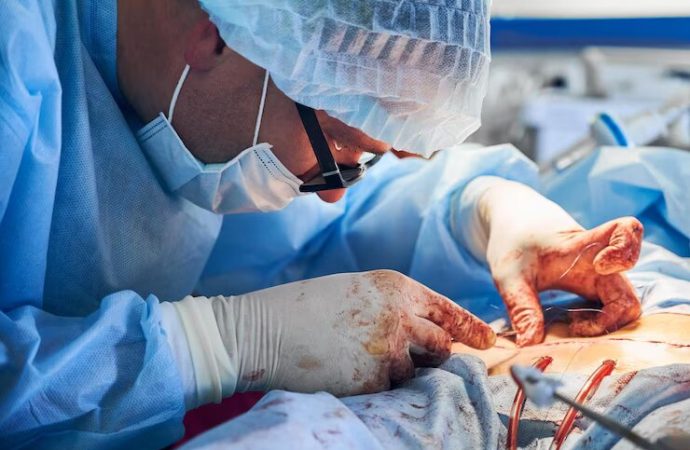Welcome to our blog post on the topic of organ transplants. Every year, countless people die while waiting for a life-saving organ transplant due to an outdated and ineffective system. However, there is hope on the horizon! In this article, we will explore how overhauling the organ transplant system could save lives and raise awareness
Welcome to our blog post on the topic of organ transplants. Every year, countless people die while waiting for a life-saving organ transplant due to an outdated and ineffective system. However, there is hope on the horizon! In this article, we will explore how overhauling the organ transplant system could save lives and raise awareness about this critical issue. So join us as we delve into this important topic and discover how we can make a difference together!
The current state of the organ transplant system
There are over 120,000 people waiting for an organ transplant in the United States. Every day, 22 people die waiting for a transplant. The current system is not working and needs to be fixed.
The problem with the current system is that it relies on voluntary donations from individuals. While there are many people who are willing to donate their organs, the number of people who need transplants far exceeds the number of organs available.
One way to fix this problem is to create a national registry of donors. This would allow doctors to match patients with donors more easily. Another way to increase the number of organs available is to allow people to sell their organs. This would create a market for organs and provide an incentive for people to donate them.
The current system is not working and needs to be fixed. With over 120,000 people waiting for transplants and 22 dying each day, something needs to be done. Creating a national registry of donors and allowing people to sell their organs are two possible solutions that could help save lives.
Why the system needs to be overhauled
The current system for organ transplants in the United States is in dire need of an overhaul. Every year, thousands of people die while waiting for an organ transplant. The problem is two-fold: there are not enough organs available, and the allocation system is unfair and inefficient.
First, the number of organs available for transplant is far below the number of people who need them. According to the Organ Procurement and Transplantation Network (OPTN), over 115,000 people are currently on the national transplant waiting list. But in 2016, only about 33,600 transplants were performed.
Second, the allocation system is flawed. Organs are allocated based on factors such as blood type and how long a person has been on the waiting list. However, this system doesn’t take into account a person’s health or their chances of survival. As a result, many people who are sicker and have a higher risk of death are less likely to receive an organ transplant.
The current system is clearly not working. Overhauling the organ transplant system is essential to saving lives. Increasing the availability of organs and changing the allocation system to give priority to those who are sickest would make a tremendous difference. It would mean more lives saved and more families kept whole.
How an overhauled system could save lives
The U.S. organ transplant system is in dire need of an overhaul, and this could save countless lives. The current system relies on a patchwork of state laws and regulations, which can vary widely from one state to another. This can create confusion and delays when organs are needed for transplantation.
In addition, the current system does not prioritize patients who are most in need of an organ transplant. Those who are sickest and have the greatest medical need should be at the top of the list for receiving an organ, but often they are not. This needs to change.
Finally, the organ transplant system needs to be more efficient and streamlined. There are many opportunities for improvement, such as increasing the number of donor coordinators and making it easier for potential donors to sign up on the national registry. With these changes, we can make sure that organs are matched with recipients in a timely manner and that everyone who needs a transplant gets one.
What needs to be done to overhaul the system
In the United States, organ transplantation is overseen by a patchwork of state and federal agencies, and there is no centralized system for matching donors with recipients. As a result, organs are often wasted because they are not matched up in time with people who need them.
One way to fix this problem would be to create a national registry of potential organ donors and recipients. This would allow for more efficient matching of organs with people who need them, and could potentially save thousands of lives each year.
Another reform that could be made is to change the way organs are allocated. Currently, organs are primarily allocated based on geographic location. This means that people who live in areas with high rates of organ donation are more likely to get an organ than people who live in areas with lower rates of donation.
However, this system is unfair and results in some patients waiting years for an organ while others receive one almost immediately. A new system should be implemented that gives priority to the sickest patients regardless of where they live. This would be a more equitable way of distributing organs and could help to save even more lives.
Conclusion
It is clear that there are many ways to improve the organ transplant system. From addressing the shortage of donors and organs, to improving waiting list processes and health insurance access for transplants, these changes could make a huge difference in saving lives. We need more awareness of the issues currently facing our organ transplant system so we can enact legislative change and overhaul this important part of our healthcare system. With better understanding come increased hope for those waiting for life-saving transplants – let’s work together to create a brighter future for them.





















Leave a Comment
Your email address will not be published. Required fields are marked with *